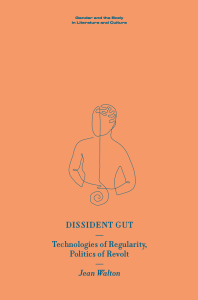Erica Cao // It wasn’t until the 1900s that psychologist Edward Titchener translated the German word, “einfühlung,” from a concept of aesthetics into the English word, “empathy,” of human understanding that we know today. The relatively recent birth of the word seems to be gaining ever more use in popular discourse. In the wake of George Floyd, Joe Biden has been said to be on an “empathy offensive.” Others invoke empathy as part of a call for civility. Senator Cory Booker and President Barack Obama have described the US as in a “crisis of empathy” and “empathy deficit,” respectively.
What do we mean by empathy and does it matter? Einfühlung’s direct translation meaning “feeling into” was meant in the context of a body’s resonance with nature or art. Empathy’s meaning has changed throughout time and disciplines. Partly because of its wide applications in philosophy, social and natural sciences, humanities, and the arts, researchers studying empathy like me still have a hard time understanding how it is defined. More recently, psychologists and anthropologists are understanding empathy as dynamic and situated in social context. In everyday speak, we tend to understand empathy as an individual’s emotional and cognitive ability to understand the experiences of others.
But the multifaceted meanings of empathy are worth unpacking, especially in the context of calls for empathy and what we could shape them to mean. A more dynamic, collective, or Einfühlung kind of empathy which incorporates the individual with the landscape—the interlinking structures and systems—better address needed approaches to empathy today.
The application of empathy in medical education is one example: the decline of empathy in medical students during clinical training is a worrisome trend. In response, arts and humanities curricula in medical education have aimed to enhance the individual empathy of students as a skill or trait. (In my first year of medical school, my classmates and I had weekly required classroom seminars where we read a poem or prose piece and each wrote a personal reflection.)
But what this individual approach to empathy leaves out is the influence social context has on empathy—in this case, the context of the healthcare system. The studies citing a decline in empathy refer to a questionnaire that also measures attitudes about care in the clinical context. These attitudes are dependent on a culture and system that tends to prioritize efficiency and business over patient time and care. The broader, root problem lies not in the failure of the individual but the failure of the system.
A failure to prioritize well-being and care in medicine also afflicts society more broadly. The most recent rates of average life expectancy in the US have declined for three consecutive years, counter to trends in other developed countries. Meanwhile, suicide rates rise, especially for white working-class Americans facing outsourcing or automation of work and costly healthcare. These “deaths of despair” are also a kind of conceptual decline: what Marilynne Robinson describes as “a decline in hope and purpose.” This decline, too, is not a problem of individual character deficit. It’s a problem of structures of work and health, and, as Robinson notes, of thinking revolving around scarcity.
Thinking about empathy on an individual level isn’t wrong, but it tends to be the go-to approach to empathy we think of—and ultimately, if we are serious about its enhancement, then an approach which integrates systems and social context would be more effective. Conceptualizing a more collective version of empathy is not merely a matter of semantics, but a matter of thinking beyond mentalities of the individual, competition, or scarcity. In his essay “Down at the Cross,” written during the emerging civil rights movement, James Baldwin observed a difference between love as personal and as a “state of being.” The latter was unattainable in a pervasive mentality of “death by drowning.”
“I use the word ‘love’ here not merely in the personal sense,” he writes, “but as a state of being, as a state of grace—not in the infantile American sense of being made happy but in the tough and universal sense of quest and daring and growth.” Baldwin argued that the only way for the white American to be free would be “to become a part of that suffering and dancing country” of black America. To understand the country, to understand the person, to become part of both.
The unjust losses of COVID-19 and George Floyd among countless others are consequences of systems in this suffering country that still aren’t working. The language of “empathy deficit” and “crisis of empathy” has economic and geopolitical analogies: federal deficit and crisis of democracy. At such scale, an empathy of interpersonal relations also includes institutions and power. A more expansive empathy, and love, recognizes its own dependence on political and economic structures centered around care.
Featured image: Detail from English School, Cheltenham from Leckhampton Hill (19th century). Bridgeman Images



